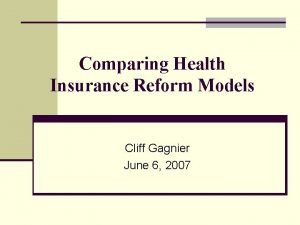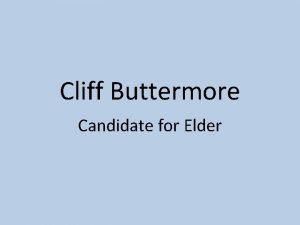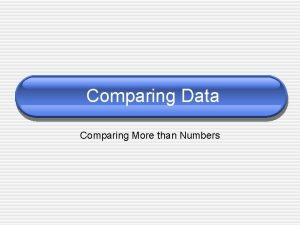Comparing Health Insurance Reform Models Cliff Gagnier June










- Slides: 10

Comparing Health Insurance Reform Models Cliff Gagnier June 6, 2007

Problems with the Current Health Care Model n Tens of Millions lack insurance n High cost of employer based health insurance disadvantaging U. S companies abroad n Poor consumer information n Equity issues n System based on willingness to pay, not need

Market Competition Model n Market Competition thought to be most efficient by proponents n Government involvement limited to a carrot approach with the private sector n Most strict example would be the elimination of Medicare and Medicaid n Generally does not solve the problems of the current system; information, equity and need n Maintains consumer choice

Economic Analysis of the Market Competition Model n Health care market suffers from a distortion known as moral hazard n Raises the prices of health care costs and premiums without equivalent increases in health care outcomes n Marginal utility is less than marginal cost

Managed Competition Model n An insurance union for collective bargaining n Results in increased competition and access to information for the group n Model has been shown to lower premiums

Economic Analysis of the Managed Competition Model n Case study: Federal Employees Health Benefit Plan (FEHBP) Lower premium rate increases compared to the private insurance industry - 5. 0% to 3. 5% n Low administrative costs under the Office of Personnel Management but at the expense of negotiating for lower prices n Considered a possible model for national universal health care n

Compulsory Insurance Model n Two Forms n Compulsory Individual n n Each individual required to have insurance Similar to laws mandating car or unemployment insurance Often single payer systems - Switzerland Compulsory Employer n n Employers required to provide insurance or pay higher tax rate to fund government program Usually coupled with tax breaks for small businesses

Single Payer Model n A single government program that provides insurance n Examples include Medicare or the Canadian health system n Reduced administrative costs due to economies of scale and non-profit status n Provides based on need rather than willingness to pay n Decreases in premium costs somewhat offset by increases in taxes

Economic Analysis of the Single Payer Model n Common criticism of single payer model - Increased wait times decreases health care outcomes n Comparing wait time effects on mortality – Quebec and Massachusetts Quebec has longer wait times and increased mortality rates for hip surgeries n Study finds increased mortality due to longer after surgery stay and not due to longer wait times n

Conclusion n No health insurance model will satisfy all interested parties n Society will need to determine which groups are favored over others but also how to do justice to those that will be worse of under a new model n None of the health insurance models will significantly lower actual health care costs n Additional reform is needed to correct the disparity between health care costs and outcomes; other nations pay significantly less
 Cliff insurance agency
Cliff insurance agency Prism health north texas jobs
Prism health north texas jobs Systematic design model by robert diamond
Systematic design model by robert diamond Insurance proposals fire insurance
Insurance proposals fire insurance Shall will difference
Shall will difference Chapter 12 of to kill a mockingbird
Chapter 12 of to kill a mockingbird The kite runner chapter 16
The kite runner chapter 16 Mappleton coastal defences
Mappleton coastal defences Barrier bars geography
Barrier bars geography Cliff notes murder on the orient express
Cliff notes murder on the orient express 13 fatal errors
13 fatal errors



















